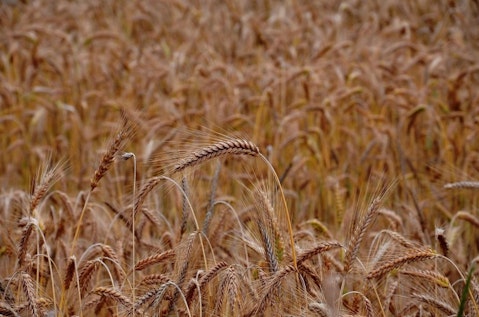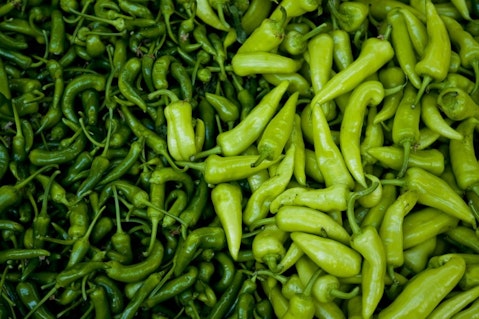Genetically Modified Foods (or GMOs) have become more and more prevalent in American foods in the past decade, making them one of the 10 Countries That Consume the Most Genetically Modified Foods. No doubt, you’ve seen the Non GMO label listed on a few foods at the grocery store and wondered about it. Maybe you’ve heard health nuts rave about their dangers. But what are they, and why are they so terrible?

Fotografiche/Shutterstock.com
Genetically Modified Organisms, the Non GMO project states, are foods that have been artificially manipulated in a laboratory through genetic engineering (GE). These produce chemical combinations of plant, animal and bacteria genes that do not occur in nature or through natural methods. Modified crops have made their way into animal feed and common processed foods. These foods have yet to be proved unsafe for consumption, but opponents claim the testing has been inadequate. Their belief is that these foods make consumers more prone to allergies or diseases that resist antibiotics.
But it’s difficult to escape these types of foods. They’re commonly found in soy, canola, cotton, corn, sugar beets and yellow and zucchini squash. They also may be hidden in processed food ingredients such as aspartame, high fructose corn syrup, vitamin C, molasses, xanthan gum and many more. These are almost always infused into chips, cookies, cereal, dressings and other staples, as mentioned in 12 Examples of Genetically Modified Food. You thought everything about cookies was good, didn’t you?
Below is a list of the 10 Countries That Consume the Most Genetically Modified Foods, or more precisely, the countries that grow the most genetically modified crops. So, if you want to escape these foods, try moving to a country that’s not one of these, or at least one that exports a large percentage of their crops.
10. Paraguay
As the producer of about 2% of the world’s soybeans, Paraguay produces four varieties, and uses Monsanto’s Roundup Ready genes for planting and marketing them.

9. Honduras
As one of the world’s poorest countries, Honduras was also the first country to approve genetically modified crop commercialization in 2002. The average citizen makes under two dollars per day, so naturally poor farmers would resort to genetically engineered crops.

8. Uruguay
An interesting GMO contained food is grown in Uruguay. Uruguay is the first country to make marijuana sale and cultivation legal, but may have been tricked into this legalization by a man named George Soros. He pushed to legalize the drug, but is suspected to have done it for the purpose of more GMO crop experimentation.

7. South Africa
Unlike other African countries, South African GMO crop rates are increasing. In 2009, 98% of cotton crops were genetically engineered, as well as 85% of soybean. This is said to be because pests are a large problem in the area, and GMOs a seemingly more cost-effective answer.

6. China
In the 1980s, China began leading nearly 130 projects concerning GMOs in their country. These projects covered over 100 genes, 47 plant types, four animal types and 31 varieties of microbes. It’s not surprising that this country is one of the 10 Countries That Consume the Most Genetically Modified Foods.

5. India
A recent lawsuit between Monsanto and the US claimed that GMO seeds in India caused increasing rates of suicide among Indian farmers. GMO seeds, which some farmers have felt forced to use because of their low cost, did not perform well in this region. Because the seeds were not meant for the type of soil found in India, they have supposedly caused undue stress to farmers who have resorted to suicide. “The Center for Human Rights and Global Justice has estimated that in 2009 alone 17,638 Indian farmers committed suicide, or one suicide every 30 minutes,” says RT news. Monsanto lost the lawsuit, and paid out their $2.4 million.

4. Canada
Forty-three percent of Canada’s farming land consists of GMO crops. This country also imports much of its food from the US, which would account for even more GMO consumption.

3. Brazil
Another Latin American country, Brazil, has 85% of its soy crops genetically modified, and is also working on modifying their sugar cane, another common crop. Farmers have resorted to this method because of cost. Modifying crops in this way can reduce growing costs because GMO crops produce more and require less pesticides.

2. Argentina
The results of the high rates of GMOs in Argentina have been devastating. Since over 50% of its cultivated land consists of GMO soy, citizens consistently experience dizziness, itchiness and flu symptoms after being exposed to crops being sprayed, and those are only the short term effects. Infertility, cancer, birth defects, child defects and endocrine dysfunction are also results of increased from exposure to spraying.

Marcin Balcerzak/Shutterstock.com
1. The US
The US has become the main GMO victim. In North America, over 80% of our food contains GMOs. Monsanto, the company that produces GMO products, was recently protected by President Barack Obama when he signed the Monsanto Protection act, which threw many GMO-hating Americans into outrage.

Andrija Markovic/Shutterstock.com
You’ll notice none of the above countries include European regions. But that’s because Europe largely banned GMO grown foods and recently put strict requirements on labeling them.
Clearly, GMO crops in countries throughout the world have proved devastating in some areas and either beneficial or unnoticeable in others. Only time will tell the long term effect on the 10 Countries That Consume the Most Genetically Modified Foods. In the meantime, Europe sounds like a great place to live.





